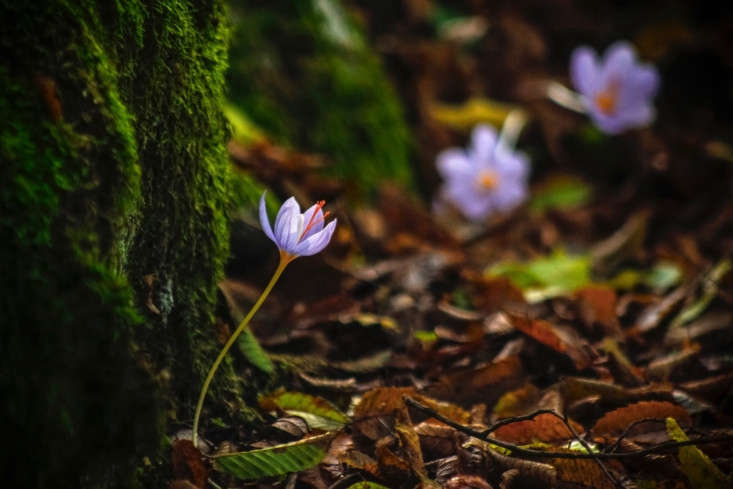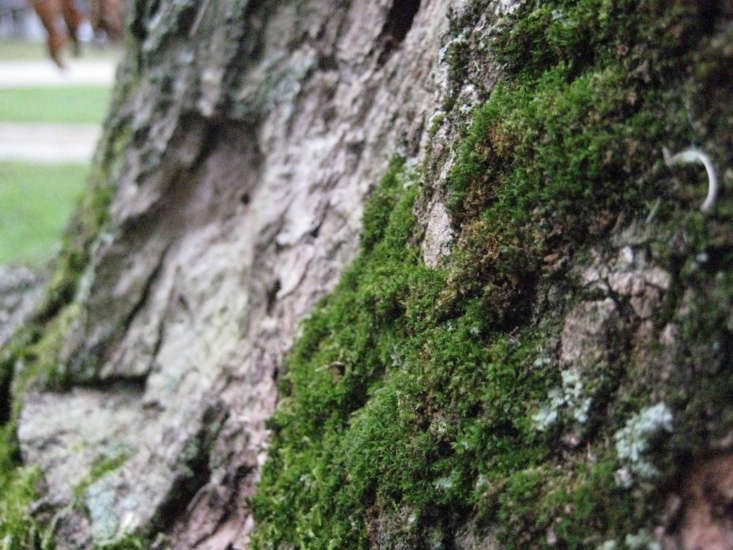If fairy gardens are magic—and make no mistake, they are—it is in large part because miniature worlds can be so easily chaperoned. A tiny universe can be controlled from above, with twig cottages laid out just where you want them, along with neat pebble paths and velvety moss roofs and friendly fairy occupants who all get along with their neighbors. Is this not a place any one of us would love to live?
You can see famous fairy gardens built by fellow travelers in places like Maine’s Monhegan Island or Tinker Nature Park in western New York, or you can make your own private paradise at the base of a backyard tree. When you come upon someone else’s fairy garden by accident, it is a delightful surprise (here I am thinking of a miniature living room, perched at eye level in a tree trunk, which my children used to pass on the walk home from school in our northern California town).
But not so fast. We live in contentious times, and not even fairy gardens are exempt from politics. “A growing number of … environmentally conscious locales are fighting the scourge of fairy gardens” built using plastic pieces, faux plants, or fairy figurines, The Wall Street Journal reported a few weeks ago. Beware of self-proclaimed “stompers” who will summarily smash any structures deemed to disturb the natural surroundings.
A general rule: Work with what the woods offer. If you stumble on a likely spot for a fairy garden, don’t sabotage anything that’s alive. To avoid harming flora or fauna with a fairy garden, use natural materials—and never disturb a living plant, even if it’s in the the perfect spot for Thumbelina to put her nutshell cradle.
Here are 12 of our favorite ideas for fairy gardens; please steal them to make your own.
Toadstool Umbrellas

Just the spot to site a fairy garden: mushrooms, toadstools, and other fungi are just the right size and scale to shelter fairies. But do not disturb. Don’t pick them and for God’s sake don’t put them in your mouth because not everything that looks delicious is edible.
Old Stumps

Decaying tree trunks and stumps can offer shelter to an extended family of fairies, including cousins.
Hollow Trees

Remember, “Glitter is litter to the animals,” as the sign says at Tinker Nature Park. But there are no rules against affixing little bits of wood and bark to the wood and bark of an existing tree.
For fairy garden supplies and furnishings, see 10 Easy Pieces: Miniatures for Fairy Gardens.
Found Flowers

Don’t pick flowers, don’t dig up flowers, don’t crush flowers under your boots. But if you see a tiny, charming flower in bloom, it is perfectly OK to put a little piece of bark next to it to make a magic carpet for a fairy to ride.
Twigs and Branches

You can fashion all sorts of furnishings from the flotsam and bits you can pick up beneath your feet: twig chairs, twig tables, twig roofs, twig swing sets, twig … well, you get the idea.
Acorn Caps

Flip over an acorn cap and you have an acorn cup. Or a fairy birdbath. Think outside the box here.
Wooden Roofs

Bark, branches, twigs, wood scraps: These are the tools of the trade when constructing a house for a fairy.
Mysterious Doorways

Fairy garden doorways, as a rule, do not have to lead to anywhere. Affix one to a tree trunk and imagine what’s behind it.
Bits of Bark

A fairy lean-to at Coastal Maine Botanical Gardens as shown above is built entirely of found bits of bark, twigs, pine cones, pine needs, and mossy rocks found nearby.
Seashells

As a rule, it’s best not bring in anything in your pockets if you’re in a public woodland. But if you find yourself at the edge of the sea, by all means incorporate washed-ashore shells into your fairy garden design. Sea glass? Not sure if that’s allowed.
Mossy Backdrops

Velvety green walls, curtains, roofs, and carpets can all be fashioned from moss.
Rock Sculptures

Fairy art exhibit? Why not? Pebbles, stones, smooth rocks, and raked gravel can all be used to create sculptures in a fairy garden.
See more of our favorite miniature worlds in our curated guides to Garden Design 101 and read more:
- 10 Easy Pieces: Miniatures for Fairy Gardens
- Mix-and-Match: Make Your Own Miniature Hanging Garden
- Tiny Bouquets: 8 Ideas for Floral Arrangements in Miniature Vases
- The New Terrarium: 6 Top Trends for 2018
- When Terrariums Go Bad: 6 Tips for Troubleshooting












Have a Question or Comment About This Post?
Join the conversation (0)